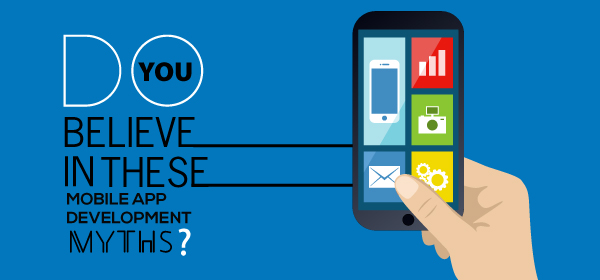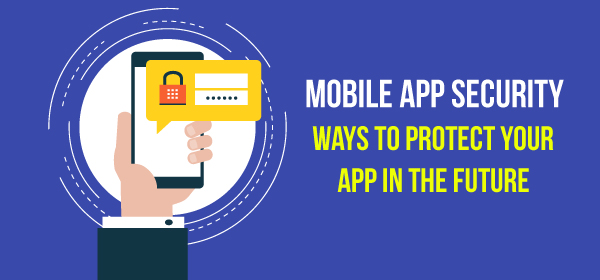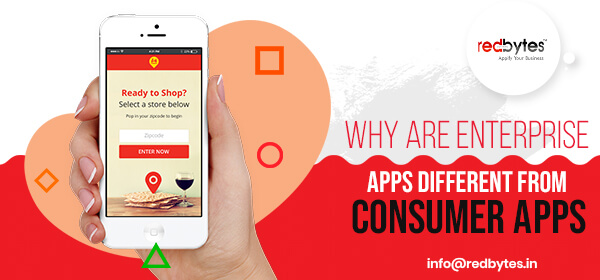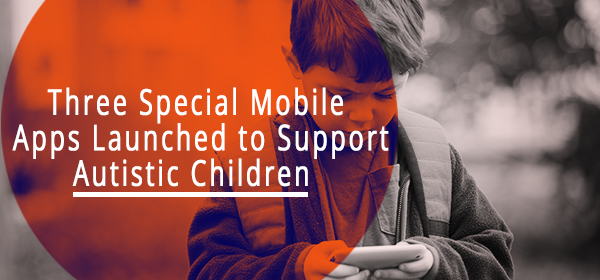It hasn’t been long since businesses have started realizing that having a mobile app of their own can serve as a great platform for marketing. As a result, lots of the businesses, big and small, have jumped into the bandwagon.
But, at the same time, there are lots of myths regarding mobile app development due to which at least some businesses are hesitant to take a step forward and those who already did, are suffering from huge losses.
Here are some of the common myths, you might have come across, about mobile app development:
Myth: Mobile app development steps must be discussed in detail prior to starting it.
Truth: Customers may not have detailed knowledge about mobile app development process. Therefore, they may hesitate to approach mobile app development agencies thinking that all steps must be discussed in detail before the development actually starts. However, the truth is that the developers are creative and talented, and can easily fill in those areas you may not have much knowledge about in the mobile app development process. The tactics used for mobile app development can be discussed in advance. Even if the customer provides details about just the basic requirements, the developers will create the apps that meet the needs of the customers and provide unique user experience to the targeted audience.
Myth: It takes just few days to create a mobile app.
Truth: Mobile app development is not a simple, short term process like what it is generally thought of as. It is an ongoing process that needs to have an infallible strategy to begin with. When you approach a mobile app development company, they may give you an estimate in terms of time and effort. However, you may have the mobile app in your hands way before the estimated time or may be after that. It all depends on the process.
Myth: The mobile app development time depends on the size of the app.
Truth: People generally think that a mobile app that is small in terms of its physical size, like, the one-screen apps, is easy to create. However, the truth is that the mobile apps, irrespective of their size, take months to be built. Also, the integration of a third party plugin/support can add to the development time. From planning a mobile app development strategy to creating a mobile app, it is always a time taking process.
Myth: An aesthetically pleasing app can earn 5 star rating in the app store.
Truth: An app that looks good definitely adds to the ratings in the play store. But, it doesn’t mean that the app’s look is the only factor that contributes to the rating. An app gets a good rating only if it functions smoothly and is error free. The quality of the functioning of an app is equally important as its looks.
Myth: Your job is over once the mobile app development process is completed.
Truth: Remember, your mobile app is just one in a million that serve the same purpose. Therefore, the chances that your app may go unnoticed are high. Just like the development process, it is also important to invest time and resources to promote your app. It’s also important to have a strong marketing strategy so that all the efforts you and the mobile app developers have put into creating the app don’t go down the drain.
Myth: The mobile app development cost is all that matters.
Truth: Your job doesn’t end with creating a mobile app. You’ll have to maintain it if you want your app to stay here for long and for that, you’ll have to invest more money. It is necessary to keep the app free of bugs and other defects and enhanced depending on the technology updates.
Myth: Native apps provide the best experience compared to HTML5 apps
Truth: Every app, whether native, hybrid or mobile web (also termed as HTML5 apps), have their own pros and cons. Though native apps are generally considered to provide best experience, it is not always the best choice. It all depends on the requirements of the users. Also, tools such as Xamarin not only help cross platform development maintain the same levels as that of native app development but also in surpassing it in the near future.
Myth: Great features make an app successful.
Truth: It’s a common sight that companies often get ecstatic about having so many great features in their mobile app. However, the truth is that it’s not the features but the benefit the features provide to the users that decides the success of an app. Therefore, before adding a new feature to your app, ask these questions to yourselves:
• How will this feature benefit my customers?
• How will this feature help to solve the user’s problems?
• How will this feature make things easier for the users?
• If you don’t find a definite answer for these questions, remember, the feature is not worth it.










